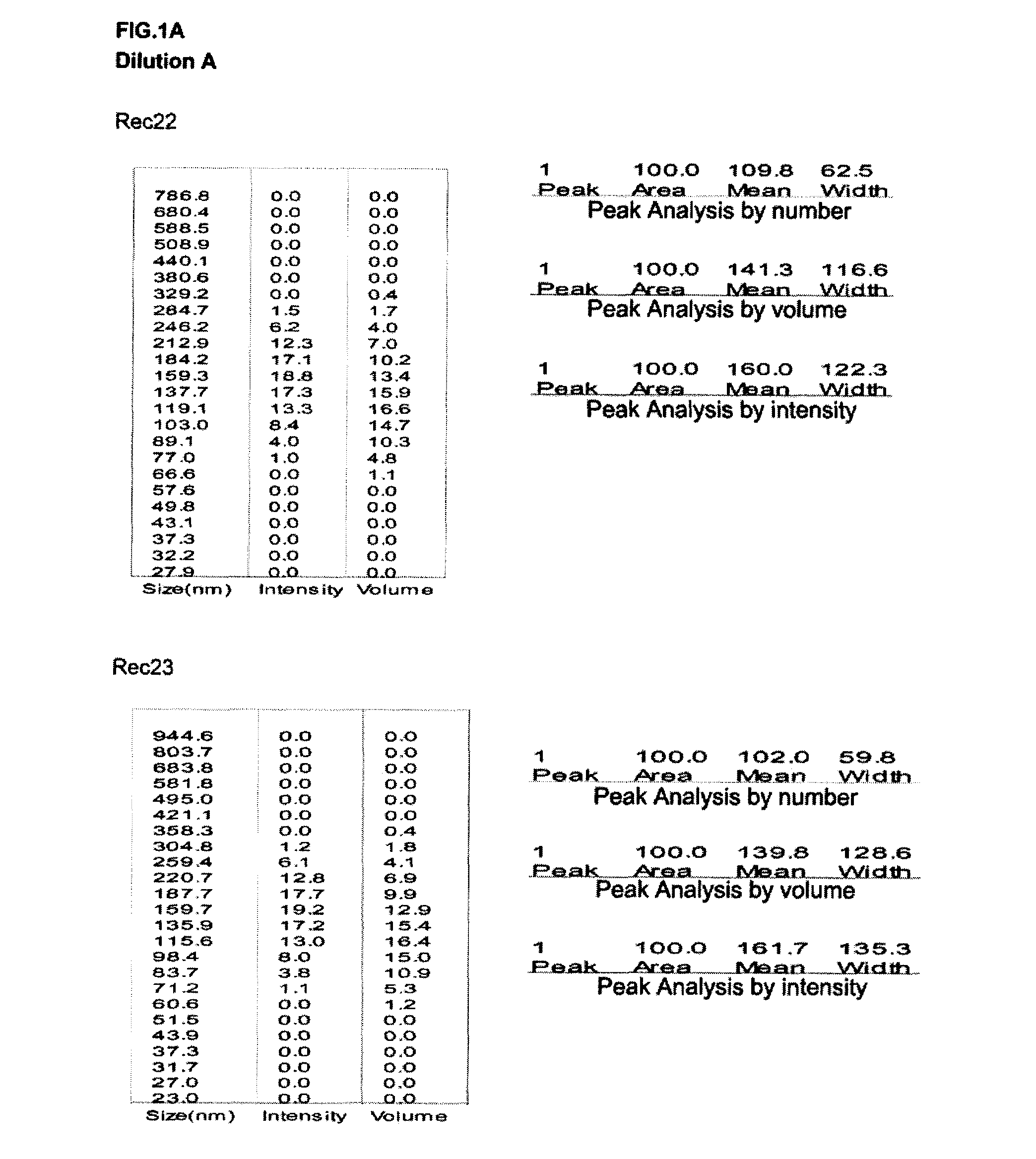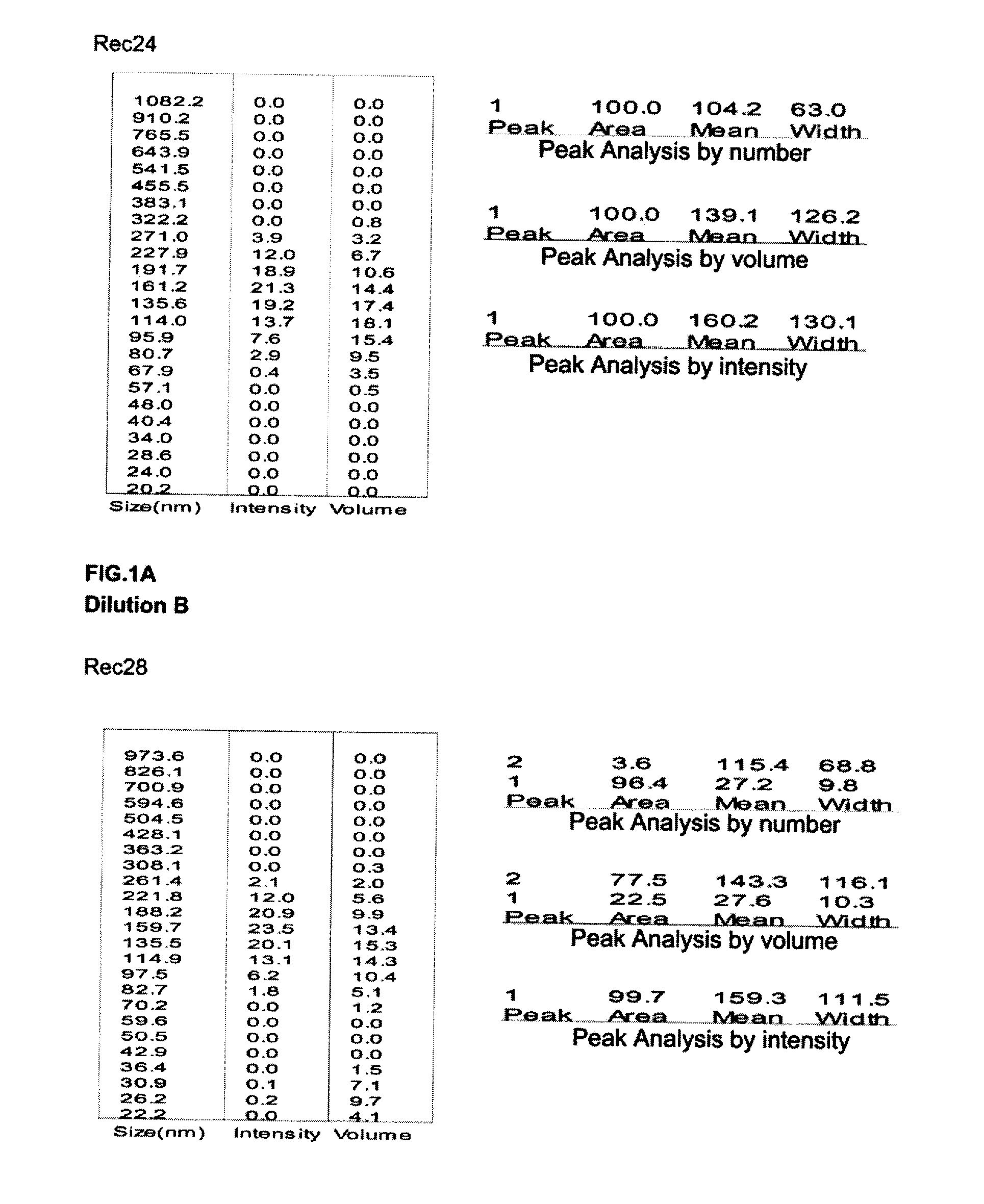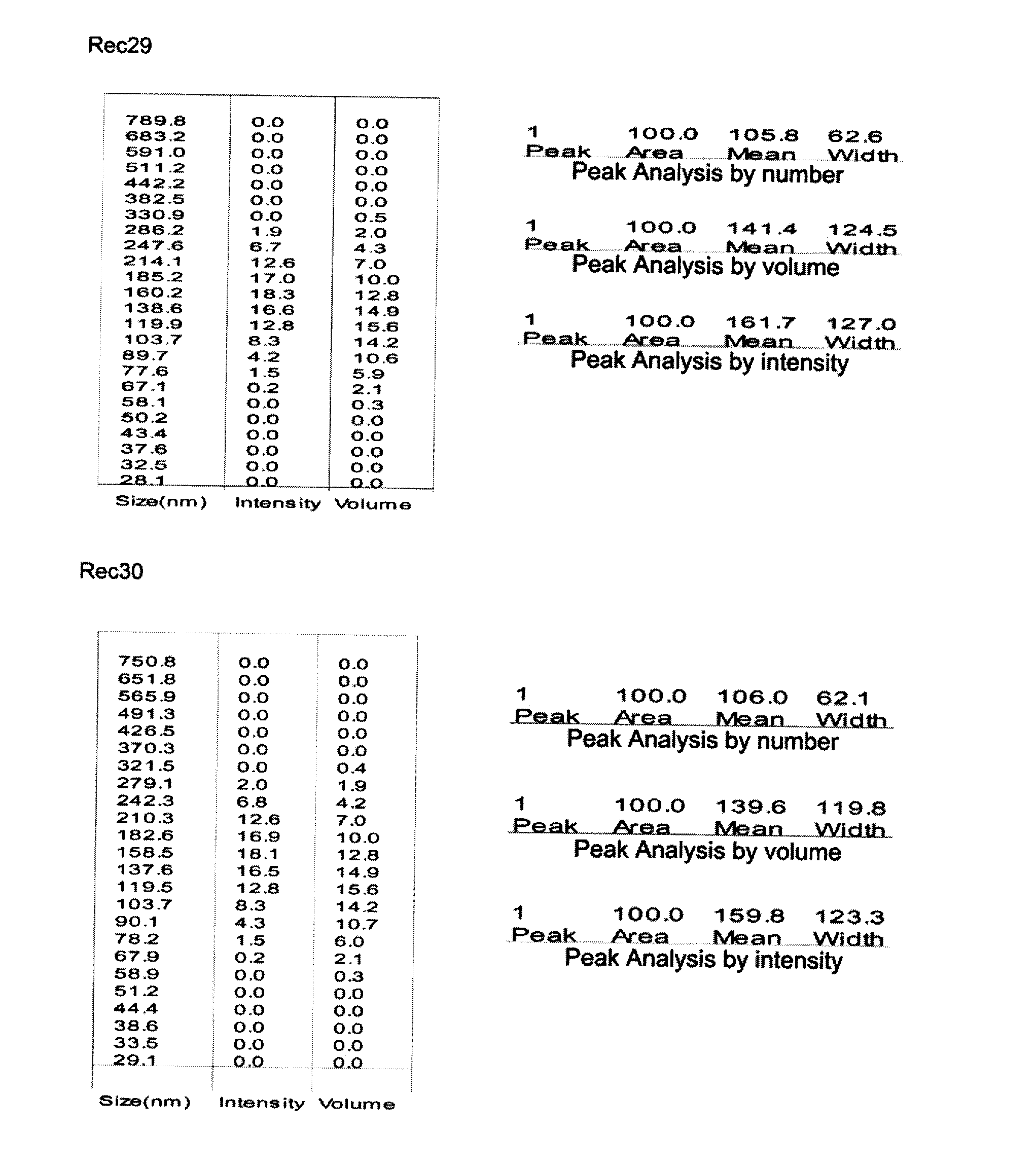Novel use
a technology of influenza vaccine and vaccine formulation, applied in the field of new use, can solve the problems of economic burden, morbidity and even mortality, and the most likely to experience such complications of individuals with underlying chronic diseases, and achieve the effects of improving the cd4 t-cell response, low response, and enhancing the antibody response to revaccination
- Summary
- Abstract
- Description
- Claims
- Application Information
AI Technical Summary
Benefits of technology
Problems solved by technology
Method used
Image
Examples
examples
[0251]The invention will be further described by reference to the following, non-limiting, examples:
[0252]Example I describes immunological read-out methods used in mice, ferret and human studies.
[0253]Example II describes the preparation and characterization of the oil in water emulsion and adjuvant formulations used in the studies exemplified.
[0254]Example III describes a clinical trial in an elderly population aged over 65 years with a vaccine containing a split influenza antigen preparation and AS03 adjuvant
[0255]Example IV describes a second clinical trial—revaccination trial—in an elderly population aged over 65 years with a vaccine containing a split influenza antigen preparation and AS03 adjuvant.
[0256]Example V shows a pre-clinical evaluation of adjuvanted and un-adjuvanted influenza vaccines in ferrets (study I and study II). The temperature monitoring, viral shedding and CD4 T-cell response were measured.
[0257]Example VI shows a pre-clinical evaluation of adjuvanted and u...
example i
Immunological Read-Out Methods
I.1. Mice Methods
I.1.1. Hemagglutination Inhibition Test
Test Procedure
[0267]Anti-Hemagglutinin antibody titers to the three influenza virus strains were determined using the hemagglutination inhibition test (HI). The principle of the HI test is based on the ability of specific anti-Influenza antibodies to inhibit hemagglutination of chicken red blood cells (RBC) by influenza virus hemagglutinin (HA). Heat inactivated sera were previously treated by Kaolin and chicken RBC to remove non-specific inhibitors. After pretreatment, two-fold dilutions of sera were incubated with 4 hemagglutination units of each influenza strain. Chicken red blood cells were then added and the inhibition of agglutination was scored. The titers were expressed as the reciprocal of the highest dilution of serum that completely inhibited hemagglutination. As the first dilution of sera was 1:20, an undetectable level was scored as a titer equal to 10.
[0268]Statist...
example ii
Preparation and Characterization of the Oil in Water Emulsion and Adjuvant Formulations
[0328]Unless otherwise stated, the oil / water emulsion used in the subsequent examples is composed an organic phase made of 2 oils (alpha-tocopherol and squalene), and an aqueous phase of PBS containing Tween 80 as emulsifying agent. Unless otherwise stated, the oil in water emulsion adjuvant formulations used in the subsequent examples were made comprising the following oil in water emulsion component (final concentrations given): 2.5% squalene (v / v), 2.5% alpha-tocopherol (v / v), 0.9% polyoxyethylene sorbitan monooleate (v / v) (Tween 80), see WO 95 / 17210. This emulsion, termed AS03 in the subsequent examples, was prepared as followed as a two-fold concentrate.
II.1. Preparation of Emulsion SB62
II.1.1. Lab-Scale Preparation
[0329]Tween 80 is dissolved in phosphate buffered saline (PBS) to give a 2% solution in the PBS. To provide 100 ml two-fold concentrate emulsion 5 g of DL alpha tocopherol and 5 ml...
PUM
| Property | Measurement | Unit |
|---|---|---|
| Fraction | aaaaa | aaaaa |
| Time | aaaaa | aaaaa |
| Time | aaaaa | aaaaa |
Abstract
Description
Claims
Application Information
 Login to View More
Login to View More - R&D
- Intellectual Property
- Life Sciences
- Materials
- Tech Scout
- Unparalleled Data Quality
- Higher Quality Content
- 60% Fewer Hallucinations
Browse by: Latest US Patents, China's latest patents, Technical Efficacy Thesaurus, Application Domain, Technology Topic, Popular Technical Reports.
© 2025 PatSnap. All rights reserved.Legal|Privacy policy|Modern Slavery Act Transparency Statement|Sitemap|About US| Contact US: help@patsnap.com



